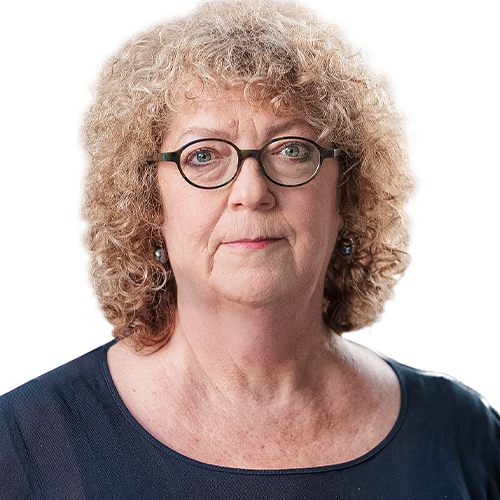KEY POINTS:
Officially, Howick is the new electorate created in Auckland under proposed new boundary changes announced yesterday but, from a political perspective, the new electorate may be Papakura because no MP has a clear claim to it.
Both parties consider it a marginal seat on paper at least and
it will be hotly contested.
Population shifts to the southeast of Auckland have forced a major redrawing of the boundaries, although they have little effect on the overall election result under MMP.
Justice Minister Mark Burton is expected to lose his Taupo seat and National maverick Brian Connell will have no seat to stand in.
Changes may also favour National in Rotorua, which is held by Labour's Steve Chadwick.
Clevedon will disappear but its National MP, Judith Collins, is expected to claim the right to stand in Howick.
And while Port Waikato disappears, its National MP, Paul Hutchison, will likely claim the right to stand in the newly formed Hunua.
Labour list MPs Dave Hereora and Darien Fenton have offices in Papakura.
Old names have been scattered across the redrawn electoral map with Howick, Hunua and Papakura in the North Island and Waitaki and Selwyn in the South Island being revived.
As expected, the falling populations down south have pushed the boundaries of South Island electorates north, squeezing out Mr Connell.
Despite speculation Mr Burton might retire at the next election, he made it clear last night that he intended to stand again.
He said whatever the final boundary changes, "I am happy to continue to be judged on the work I do for and on behalf of my constituents".
In geographical shifts, Raglan finds itself part of Taranaki-King Country and the Waikato town of Cambridge finds itself in the Taupo electorate.
The major change in the Maori electorates is the proposed name change for Tainui to Pare Hauraki-Pare Waikato.
That was also recommended in 2002 under draft changes but was dropped in the final version.
THE MAIN CHANGES
North of Auckland
Northland, held by National's John Carter, extends south to take in Wellsford.
Auckland
Newly formed Howick includes parts of Pakuranga, held by National's Maurice Williamson; Clevedon, held by National's Judith Collins; and Manukau East, held by Labour's Ross Robertson.
Newly named Papakura is formed from parts of Ms Collins' Clevedon and parts of Manurewa, held by Labour's George Hawkins.
Newly named Hunua will replace part of Clevedon and Port Waikato, held by Dr Hutchison for National, and will include Pukekohe, Waiuku and an area up to Manukau Heads.
Pakuranga will include Glen Innes, Pt England and Panmure from the Tamaki electorate.
Mt Albert, held by Prime Minister Helen Clark, takes Pt Chevalier from Auckland Central, held by Labour's Judith Tizard.
Provincial North Island
Coromandel, held by National's Sandra Goudie, takes in Te Aroha.
Taupo, held by Mr Burton for Labour, shifts north to take in Cambridge.
Napier, held by National's Chris Tremain, shifts north to the boundary of Gisborne City.
East Coast, held by National's Anne Tolley, moves west to take in the Bay of Plenty plains and Maketu.
Palmerston North, held by Labour's Steve Maharey, loses a section to Rangitikei.
Taranaki-King Country, held by National's Shane Ardern, will stretch north to Raglan.
Rangitikei, held by National's Simon Power, will take in Taumarunui.
Wairarapa, held by National's John Hayes, moves north to Waipawa.
Wellington
Ohariu-Belmont, held by United Future's Peter Dunne, loses the Belmont part to Rimutaka and is renamed Ohariu.
South Island
Invercargill, held by National's Eric Roy, expands to Riverton, Hedgehope and Glencoe.
Clutha-Southland, held by National's Bill English, expands to Queenstown, Arrowtown and Roxborough.
Dunedin North, held by Labour's Pete Hodgson, extends north to Palmerston.
Newly named Selwyn will take in parts of Wigram, held by the Progressives' Jim Anderton, and Rakaia, held by Mr Connell for National.
Newly named Rangitata replaces part of Aoraki, held by National's Jo Goodhew, and Rakaia. It is centred on Ashburton and takes in Temuka and Timaru.
Newly named Waitaki replaces part of Otago, held by National's Jacquie Dean, and Aoraki.
Wigram, held by Mr Anderton for the Progressives, loses Sydenham and Beckenham to Banks Peninsula and gains Addington and Hoon Hay.
The Maori Seats
Pare Hauraki-Pare Waikato replaces Tainui, held by Labour's Nanaia Mahuta, and takes in part of Tamaki Makaurau, held by the Maori Party's Pita Sharples, from the southern part of Manurewa.
Te Tai Hauauru, held by the Maori Party's Tariana Turia, extends north to take in the Ngati Maniapoto people.
Ikaroa-Rawhiti, held by Labour's Parekura Horomia, takes in Taita and Naenae from Te Tai Tonga, held by Labour's Mahara Okeroa.
Briefly
Seven electorates get new names, although some are recycled from the past: Papakura, Hunua, Ohariu, Selwyn, Rangitata, Waitaki, Pare Hauraki-Pare Waikato.
Six electorates lose their names: Clevedon, Port Waikato, Rakaia, Aoraki, Otago and Tainui.
Only eight of the 70 electorates remain unchanged: Whangarei, North Shore, Northcote, Tauranga, Kaikoura, Ilam, Te Tai Tokerau and Waiariki.
Electorates aim to be about 57,000.
The 69 electorates (62 general and seven Maori) will be redrawn to make 70 electorates (63 general and seven Maori). The number of list seats will reduce from 51 to 50.
Timetable
Objections close on June 5 and will be published. Counter-objections to be made between June 14 and 28.
Public hearings by the Representation Commission will be in July.
Final boundaries will be announced on September 26.
